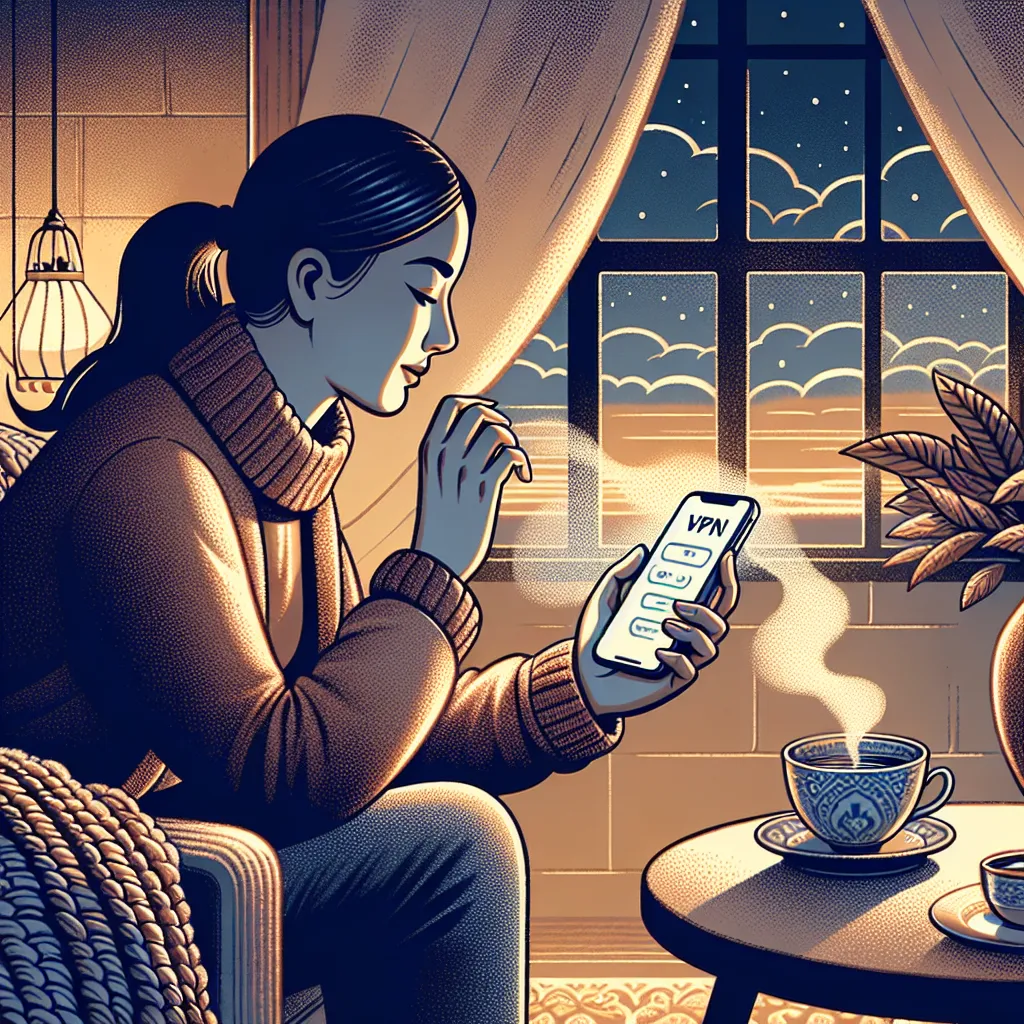In an age where privacy seems as elusive as a unicorn, ensuring your data’s safety is paramount. While most of us rely on apps to simplify our digital lives, configuring a VPN manually on your iPhone offers a unique blend of control and security. It’s like having a secret passageway that only you know about. In this guide, we’ll delve into the steps of setting up a Virtual Private Network (VPN) on your iPhone, focusing on the details that matter and unraveling the mysteries of the digital veil.

Why Choose Manual VPN Configuration?
Control and Customization
Manual configuration allows you to tailor the VPN settings to your specific needs. You get to decide the protocols, the server, and even the encryption level—it’s like customizing your own digital fortress.
Enhanced Security
By opting for a manual setup, you minimize the risk of third-party app vulnerabilities. This method ensures that only your chosen security measures are in place, granting you peace of mind.
Access Restricted Networks
Sometimes, certain networks require a manual setup to connect. Whether it’s for work or accessing geo-restricted content, manual VPN configuration provides that flexibility.
Setting Up VPN on iPhone Manually
Step 1: Gather Necessary Information
Before diving into the setup, you’ll need some specific details:
– Server Address: Provided by your VPN service.
– Remote ID: Typically the same as your server address.
– Username and Password: Your VPN credentials.
Step 2: Navigate to VPN Settings
- Open the Settings app on your iPhone.
- Scroll and tap on General.
- Find and select VPN & Device Management.
- Tap on Add VPN Configuration.
Step 3: Configure VPN Settings
- Type: Choose between IKEv2, IPSec, or L2TP.
- Description: Name your VPN connection for easy identification.
- Server: Enter the server address.
- Remote ID: Input the remote ID.
- Local ID: Leave blank unless specified.
- User Authentication: Enter your username and password.
Step 4: Save and Connect
- Tap Done to save your configuration.
- To connect, toggle the VPN switch to the “On” position in the VPN settings.
Tips for a Smooth VPN Experience
Selecting the Right Protocol
- IKEv2: Offers a fast and stable connection, ideal for mobile devices.
- IPSec: Known for its robust security features.
- L2TP: Best for older devices that may not support newer protocols.
Troubleshooting Common Issues
- Connection Drops: Ensure your internet connection is stable. Consider switching protocols if the issue persists.
- Slow Speeds: Try connecting to a different server location.
- Authentication Errors: Double-check your username and password.
Testimonials: Real User Experiences
“Setting up a VPN manually on my iPhone was like unlocking a hidden feature. It gave me better control and an extra layer of security.” – Alex T.
“I travel a lot for work, and manual VPN setup has been a lifesaver for accessing restricted content abroad.” – Emily R.
ForestVPN: Your Trusted Partner
ForestVPN stands out not only for its robust security features but also for its user-friendly interface. With over 50 locations in 30+ countries, ForestVPN offers a truly global service. Our UAE license ensures legality and safety, making it a reliable choice for users in the region.
Why Choose ForestVPN?
- Data Privacy: No user activity logs, ensuring your privacy remains intact.
- Eco-Friendly: Our battery-saving technology reduces CO2 emissions.
- Affordable Plans: Enjoy premium features at the cost of a cup of coffee per month.
Summary
Manually configuring a VPN on your iPhone might seem daunting at first, but the benefits far outweigh the initial setup efforts. With complete control over your online privacy and security, you can browse the internet with confidence. Whether you’re a digital nomad or someone who values privacy, understanding how to manually set up a VPN is an invaluable skill in this connected world.
With ForestVPN, take your online privacy to the next level and embrace a secure digital future.
How to Add VPN on iPhone Manually
To manually add a VPN on your iPhone, follow these steps:
- Gather Information: Obtain your VPN details (server address, username, and password).
- Open Settings: Go to Settings > General > VPN & Device Management.
- Add Configuration:
– Tap Add VPN Configuration.
– Choose the VPN type (IKEv2, L2TP, or IPSec).
– Fill in the necessary fields: Description, Server, Remote ID, Username, and Password. - Save and Connect: Tap Done, then toggle the VPN switch to connect.
For a reliable and secure VPN experience, consider ForestVPN. With robust features and a commitment to privacy, it’s a perfect choice for your online safety. Explore more at ForestVPN.
FAQs About Manually Configuring VPN on iPhone
What information do I need to gather before setting up a VPN on my iPhone?
You will need the protocol type, server name, remote ID, and your username and password. This information is typically provided by your network administrator or IT supervisor.
How do I access the VPN settings on my iPhone?
To access VPN settings, open the Settings app, scroll down to General, select VPN & Device Management, and then tap on VPN. Here you can add a new configuration or manage existing ones.
What types of VPN connections can I set up on my iPhone?
You can choose from several connection types, including IKEv2, IPSec, and L2TP. The specific type will depend on your network configuration and the instructions provided by your network administrator.
Is it necessary to configure a VPN manually on my iPhone?
Most users can easily set up a VPN using a dedicated app. However, if you’re connecting to a private network for work or school, manual configuration may be required to meet specific network settings.
Can I keep my VPN enabled all the time on my iPhone?
Yes, keeping your VPN enabled can enhance your privacy and security while browsing. However, it may result in faster battery drainage and potentially slower internet speeds.
